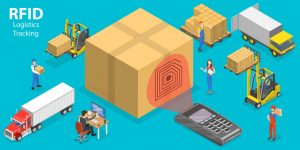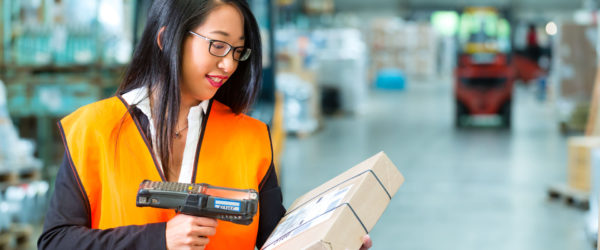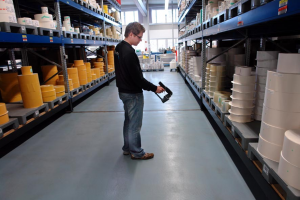RFID and barcoding are two different forms of AutoID technology used for reading and collecting data. In business, they are commonly used for asset and inventory tracking. Each form of technology has its own set of advantages and disadvantages depending upon how the technology is used. Understanding these can help you choose which technology is best for your business, although in many cases a combination of the technologies will be deployed at different stages of the tracking cycle.
What is the difference between RFID and barcodes?
A barcode inventory system requires the use of an optical barcode reader or scanner that decodes the barcodes black bars, which generally represent a series of numbers. The decoded data is sent to a computer or database that interprets what has been read. In retail sales, this data typically contains information about the manufacturer, the product and when applicable, the price.
To scan each barcode the scanner must have an unobstructed view of it referred to as the ‘line of sight.’ RFID scanners however can read multiple codes at once and do not require line of sight.
What is RFID technology?
RFID is an acronym for radio-frequency identification. RFID technology uses radio frequencies as opposed to an optical laser used by barcode scanners. RFID uses electromagnetic fields to automatically identify and track tags attached to objects. At a simple level, an RFID system consists of a tiny radio transponder, a radio receiver and a transmitter.

Advantages and disadvantages of RFID technology versus barcode technology
RFID scanners are much more efficient for scanning a large number of items than barcode scanners. The data captured is more secure, and the labels/tags can be as durable as those of a barcode system. However, incorporating a chip and antenna, RFID tags can be more expensive and systems require more setup than for barcodes.
In contrast, barcode systems can sometimes be more accurate and reliable because they capture codes individually and you don’t have to worry about it scanning more items than intended.
For more information on the specific advantages of RFID technology read our blog: Top 7 reasons for using RFID technology in a warehouse

How to choose between RFID and barcodes?
When choosing the most appropriate system for your business you will need to consider:
- What you are tracking
- Your budget
- How and where your tracking will take place
- How secure you need the data you are tracking to be
RFID technology is available in low, high or ultra-high frequencies. To understand when RFID technology is a better choice than barcoding technology for certain situations and environments, read our blog: How to choose the right RFID tag and why RFID is now a viable option. This blog also specifies ballpark costs to help your budgeting.

A trusted supplier of RFID and barcode labels
As an asset identification specialist, inotec has vast experience in the provision of both barcode and RFID labelling for a variety of products and applications. The company has the added advantage of its unique high-tech R&D laboratory where its labels are tested under extreme conditions. This has led inotec to become renowned as Europe’s most trusted, experienced and reliable asset identification supplier.
If you would like to arrange a free consultation or speak to the sales team, please contact inotec UK on 01482 654466 or email info@inotec.co.uk


